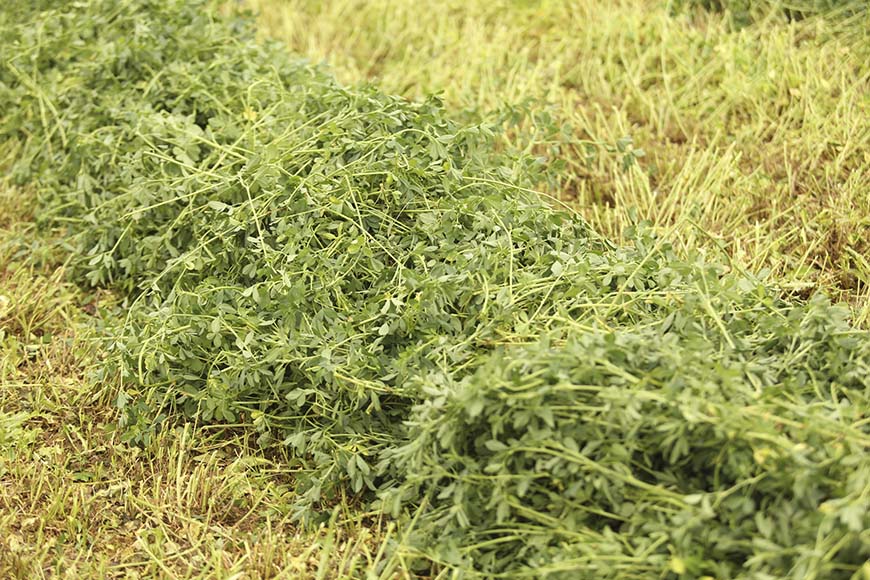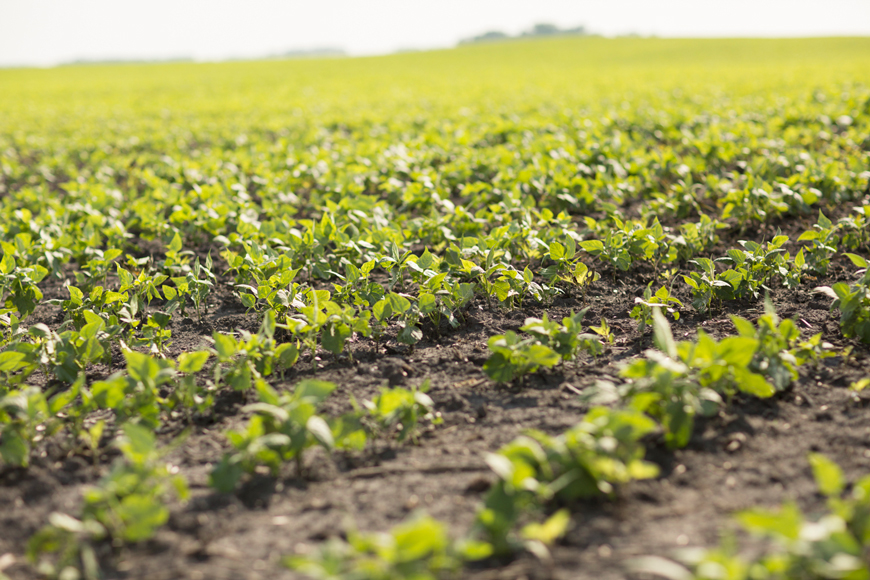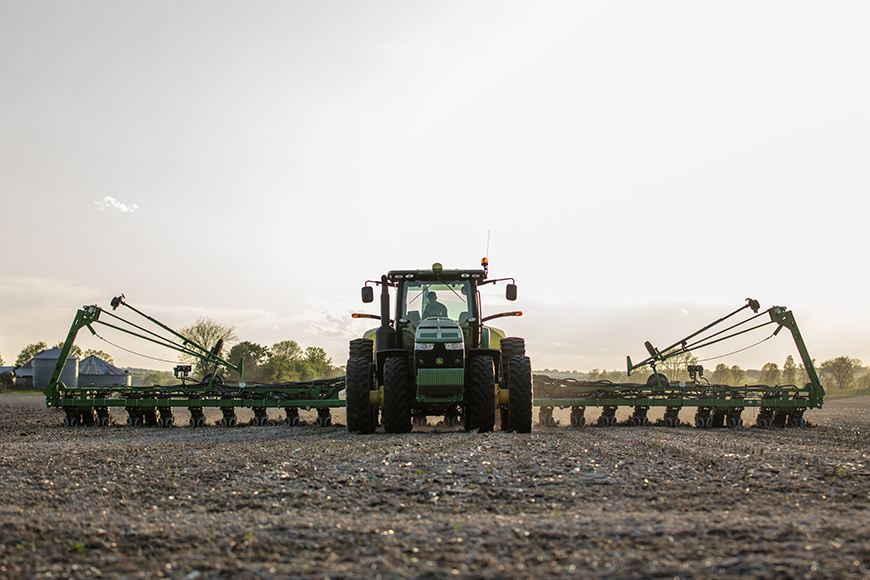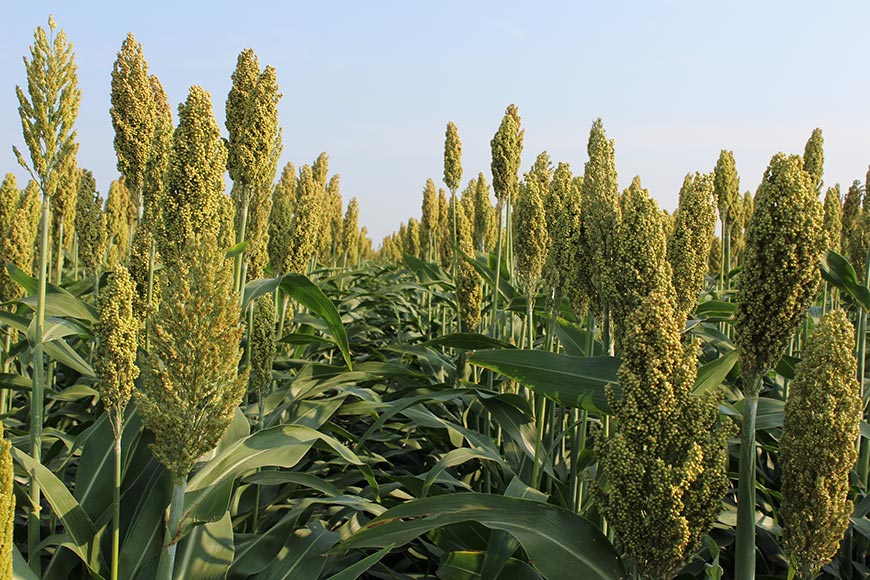Make the Most of Your Alfalfa Quality Testing

There are many variables involved in testing for forage quality. Here are a few basics of forage testing and what you should look for — and expect — when sending samples to the lab in order to receive the most accurate results and a fair price for your crop.
What makes a good test?
Most forage producers and nutritionists agree that, at a minimum, a good forage quality test should include accurate values for protein; neutral detergent fiber (NDF); neutral detergent fiber digestibility (NDFd); ash; the macro-minerals calcium, magnesium, phosphorus, potassium and sulfur; and a calculated energy value (plus starch and starch digestibility for grain containing silages). From these values, Relative Feed Value (RFV), Relative Forage Quality (RFQ) and total digestible nutrients (TDN) can be calculated.
Today, wet lab (and in vitro digestion) analyses are commonly used in conjunction with the testing method of near infrared reflectance (NIR) spectroscopy, which predicts the values of various forage nutrients using reflected wavelengths. Many labs have a database of wet lab results that they correlate with NIR data to get prediction equations that are then used to determine forage nutrient values.
Should you always use the same lab?
The short answer is yes. Even though a number of producers want to compare results between labs, I recommend sticking with one. Every lab has some analytical and NIR prediction biases for a number of reasons, which makes comparing results among labs difficult. If you send an alfalfa sample to six different labs, you’ll likely get six different predictions for NDFd. Determine what measuring standard you’re going to use and stay with it.
Should you use RFV or RFQ?
RFQ is not perfect, but it’s the best measurement we have to get a holistic view of forage quality. RFQ is a better number than RFV because it takes into consideration protein, ash, ether extract (fat), NDF and NDFd. In addition, there is a coefficient in the equation used to determine RFQ that requires entry of the lab average for alfalfa NDFd. This helps account for biases in NDFd among labs. While there are still some lab biases that go into an RFQ calculation, it comes closer to objectively evaluating alfalfa than anything else that’s currently available.
Work with your team to achieve optimal results
As every farmer knows, achieving the highest-quality forages takes a lot of dedication. Work with your agronomist, your nutritionist, the staff at your testing lab and your farm’s team to grow, harvest and test your forages to the highest degree possible. Work with one lab to avoid frustration with comparing test results among labs, and use RFQ as the best test for quality assessment.
© 2018 WinField United.
What makes a good test?
Most forage producers and nutritionists agree that, at a minimum, a good forage quality test should include accurate values for protein; neutral detergent fiber (NDF); neutral detergent fiber digestibility (NDFd); ash; the macro-minerals calcium, magnesium, phosphorus, potassium and sulfur; and a calculated energy value (plus starch and starch digestibility for grain containing silages). From these values, Relative Feed Value (RFV), Relative Forage Quality (RFQ) and total digestible nutrients (TDN) can be calculated.
Today, wet lab (and in vitro digestion) analyses are commonly used in conjunction with the testing method of near infrared reflectance (NIR) spectroscopy, which predicts the values of various forage nutrients using reflected wavelengths. Many labs have a database of wet lab results that they correlate with NIR data to get prediction equations that are then used to determine forage nutrient values.
Should you always use the same lab?
The short answer is yes. Even though a number of producers want to compare results between labs, I recommend sticking with one. Every lab has some analytical and NIR prediction biases for a number of reasons, which makes comparing results among labs difficult. If you send an alfalfa sample to six different labs, you’ll likely get six different predictions for NDFd. Determine what measuring standard you’re going to use and stay with it.
Should you use RFV or RFQ?
RFQ is not perfect, but it’s the best measurement we have to get a holistic view of forage quality. RFQ is a better number than RFV because it takes into consideration protein, ash, ether extract (fat), NDF and NDFd. In addition, there is a coefficient in the equation used to determine RFQ that requires entry of the lab average for alfalfa NDFd. This helps account for biases in NDFd among labs. While there are still some lab biases that go into an RFQ calculation, it comes closer to objectively evaluating alfalfa than anything else that’s currently available.
Work with your team to achieve optimal results
As every farmer knows, achieving the highest-quality forages takes a lot of dedication. Work with your agronomist, your nutritionist, the staff at your testing lab and your farm’s team to grow, harvest and test your forages to the highest degree possible. Work with one lab to avoid frustration with comparing test results among labs, and use RFQ as the best test for quality assessment.
© 2018 WinField United.




